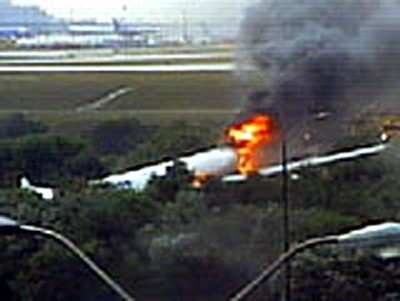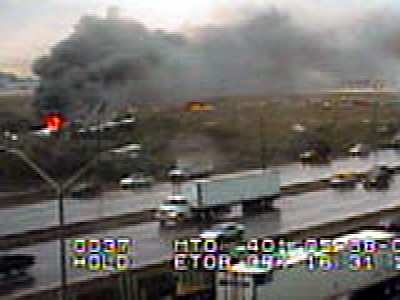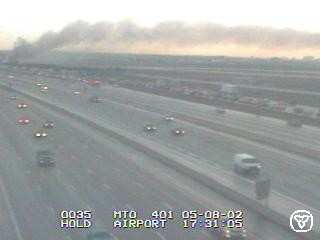Says GTAA, TSB Failed To Provide Safety Overrun Zones
According to a lawsuit filed this week by Air France, it wasn't
the pilots' decision to land during a strong thunderstorm that led
to a 2005 landing accident involving one of the airline's Airbus
A340s... but rather several safety faults with Runway 24-Left at
Toronto's Pearson International Airport.

According to the Toronto Star, Air France pins the blame for the
August 2, 2005 accident on the Greater Toronto Airports Authority,
NAV CANADA, and individual air traffic controllers who vectored the
jet with 309 passengers and crew onboard to land during the strong
thunderstorm. As ANN reported,
approximately 40 passengers were injured -- 10 seriously -- when
the airliner slid off the rain-slicked runway, and impacted a steep
ravine off the departure end... but amazingly, no one was killed in
the crash.
 In its December 2007 report on the
accident, Canada's Transportation Safety Board
acknowledged Runway 24L at Pearson -- the newest runway at the
airport -- did not have a 300-meter overrun zone that might have
helped avoid much of the catastrophic damage in the accident. The
Board also noted, however, the pilot chose to continue the approach
and landing despite heavy rain and wind shear, that created a
strong tailwind as the A340 approached the airport.
In its December 2007 report on the
accident, Canada's Transportation Safety Board
acknowledged Runway 24L at Pearson -- the newest runway at the
airport -- did not have a 300-meter overrun zone that might have
helped avoid much of the catastrophic damage in the accident. The
Board also noted, however, the pilot chose to continue the approach
and landing despite heavy rain and wind shear, that created a
strong tailwind as the A340 approached the airport.
"The pilot committed to landing, as he believed that this action
was safer than conducting a missed approach into the storm," TSB
Lead Investigator Réal Levasseur said in December, adding
the Board stopped short of pinning the blame for the crash on the
pilot.
In its $180 million lawsuit, Air France contends GTAA and others
failed to ensure an "adequate margin of safety for aircraft in the
event of an overrun event," adding "GTAA failed to provide a safe
environment for the conduct of civil air operations.
"The overrun and the consequent injuries to persons and damage
to property were caused solely by the negligence of the
defendants," the airline's statement of claim asserts.
The suit also cites a fatal 1978 Air Canada accident which
occurred on an adjacent runway. In that case, two passengers were
killed and 47 injured when their DC-9 impacted the same ravine on
landing. The investigation into that crash determined the "ravine
beyond the overrun area left no additional margin for error and
contributed to a high casualty rate."

Air France contends Transport Canada was "negligent" in not
heeding recommendations following the 1978 accident, in either
creating a safety buffer zone on the existing runway, nor when it
created Runway 24L, which opened in 2002.
Transport Canada contends Air France operated from Runway 24L
for many years, fully aware Canadian regulations do not decree
runoff areas. "Air France has continued to operate flights
including those by A340 aircraft on Runway 24L since the said
incident," the government adds.

Government officials point the finger squarely at the pilots,
for their failure to effect a safe landing. They note the pilots
chose to touch down nearly halfway down the 9,000-foot runway,
instead of going around.
 Aero-News: Quote of the Day (05.13.25)
Aero-News: Quote of the Day (05.13.25) IAG Orders 76 Boeing, Airbus Airliners
IAG Orders 76 Boeing, Airbus Airliners FAA Shuts Down ATC Oversight Review Amid Scrutiny
FAA Shuts Down ATC Oversight Review Amid Scrutiny Montanas ADS-B Privacy Bill Signed Into Law
Montanas ADS-B Privacy Bill Signed Into Law Newark Falls Victim to More Equipment Outages
Newark Falls Victim to More Equipment Outages






